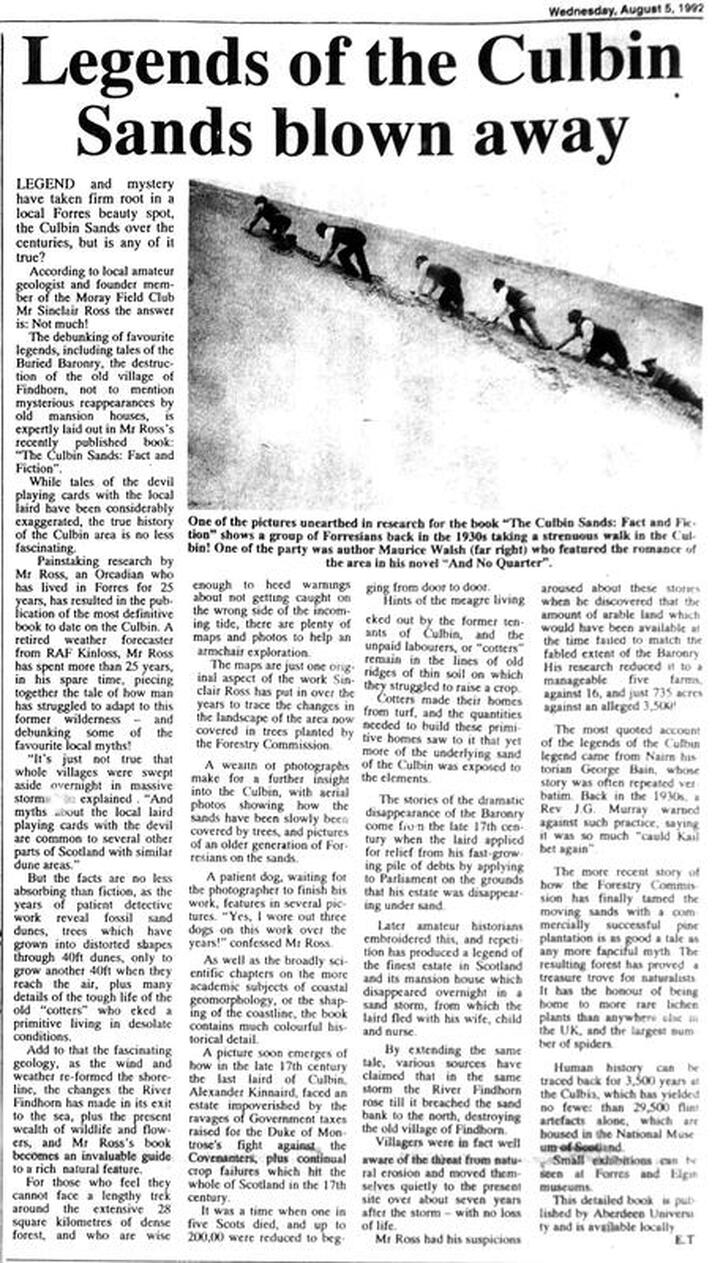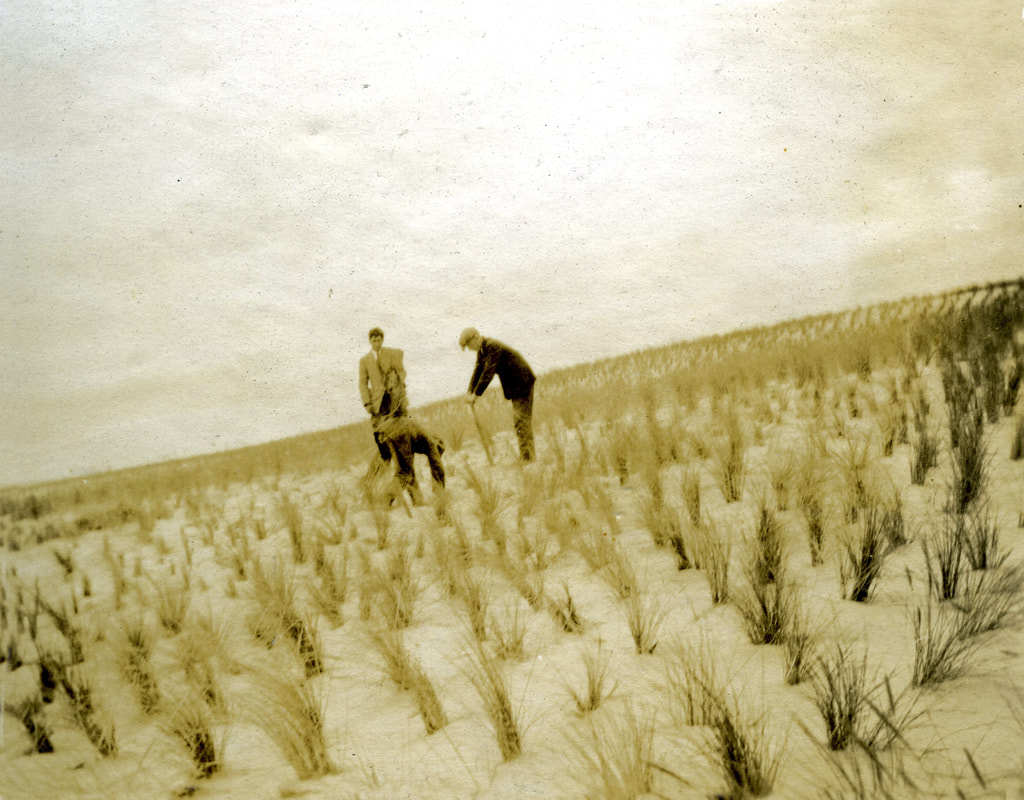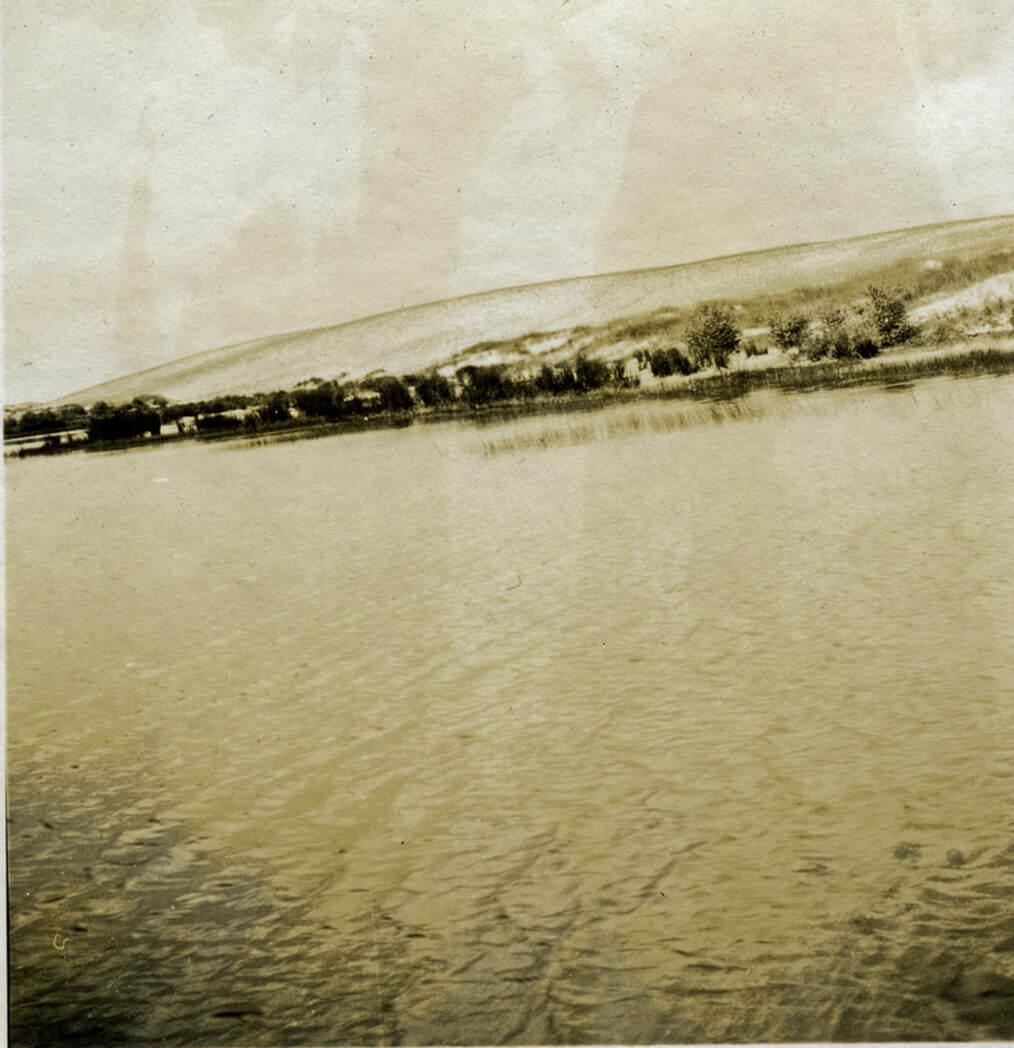Fact, Fiction and Trees
|
It is widely accepted that the sandstorms were exacerbated by the removal of grasses along the coast for thatching materials. It is also believed that – despite the unusual violence of the storm in 1694 – it was not solely responsible for the inundation of Culbin with sand. It was one of a series of drifts between 1675 and the end of the century. In his book,The Buried Barony, AA MacGregor placed a more rational interpretation on the storms.
“Dramatic and picturesque as George Bain’s account is, and consistent as it may be with popular belief that all this happened in a single night, scientific experiment has demonstrated that no sand storm, however violent, could possibly have devastated the region in so short a space of time. Any given wind can transport only a certain weight of sand in any given time. Though doubtless a storm of unusual severity did occur in 1694 the wind that year is accredited with a power which, in the light of recent calculations, is fantastic. The more acceptable explanation is that there blew in the autumn of 1694, a gale which lasted for several days and nights and which simply extended irreparably the damage done by the previous sandstorm of 1676”. |
In the 1590s, at Skagen on the northernmost tip of Jutland, the sand dunes began to shift. The movement became worse with every storm. In 1595 the villages of Østerby and Vesterby had to be moved because of the encroachment of sand. Farmland was submerged and a process of desertification – similar to that at Culbin a century later – occurred. This Sandflugten continued until the late eighteenth century when it engulfed Skagen Church.
Shortly after Easter 1775, the church door had to be dug free for the congregation to be able to attend services and, for the following twenty years, the residents of Skagen struggled to keep the church free from sand. Eventually, in 1795, they admitted defeat; the church was closed and demolished. Only the tower now stands in the middle of the dunes.
Shortly after Easter 1775, the church door had to be dug free for the congregation to be able to attend services and, for the following twenty years, the residents of Skagen struggled to keep the church free from sand. Eventually, in 1795, they admitted defeat; the church was closed and demolished. Only the tower now stands in the middle of the dunes.
Fixing the drifting sands
A century ago, in the early 1920s, the Forestry Commission embarked on the large-scale planting which has come to characterise Culbin today. This was to stabilise the dunes and prevent further drifts. Acre after acre was planted with Corsican and Scots pines.
|
|
|








